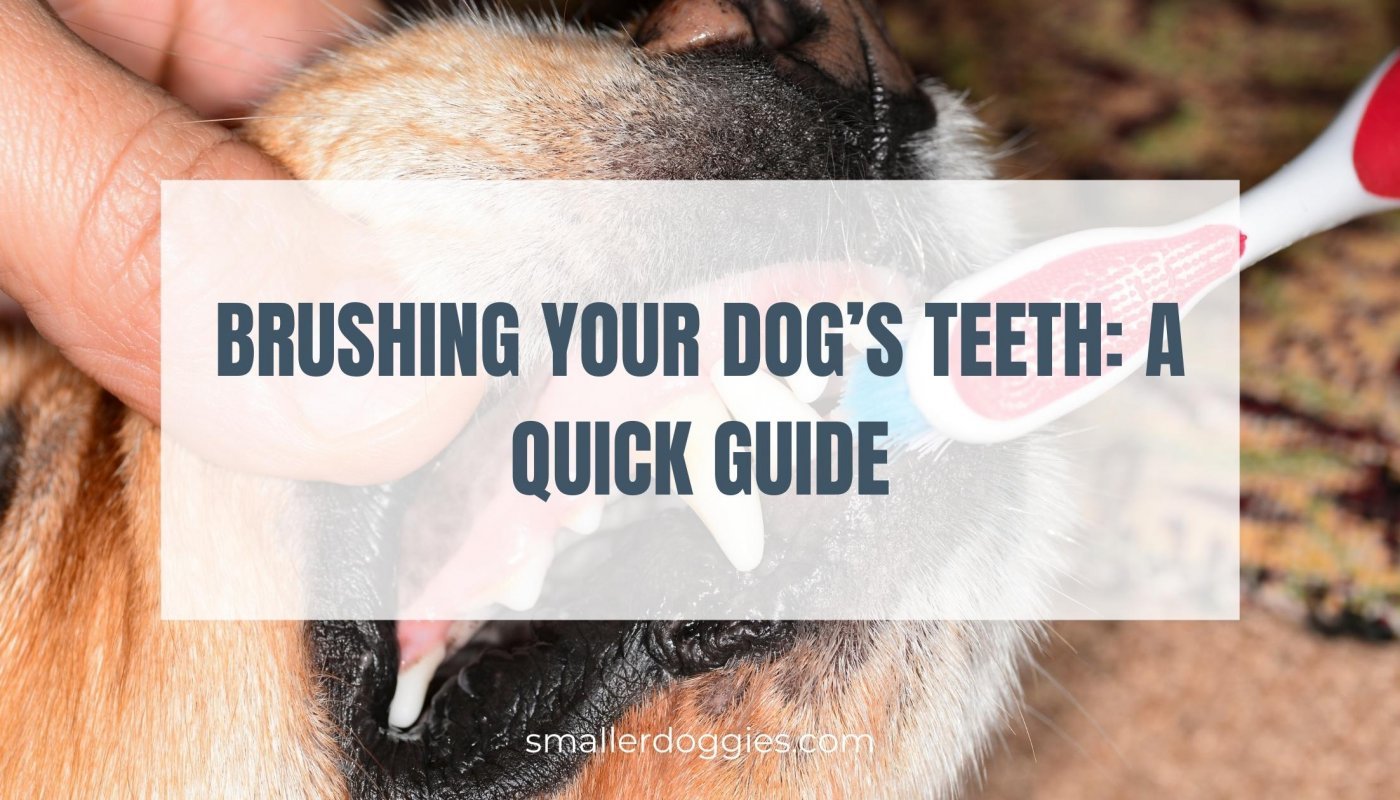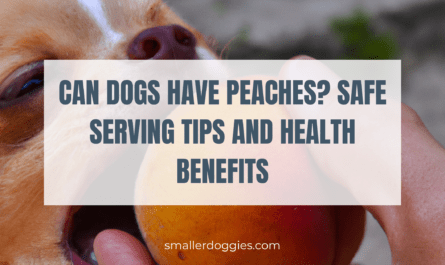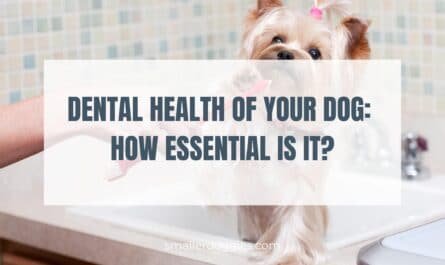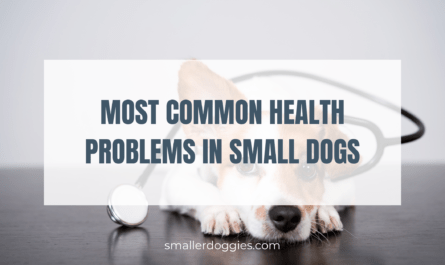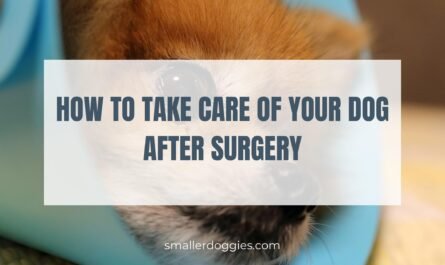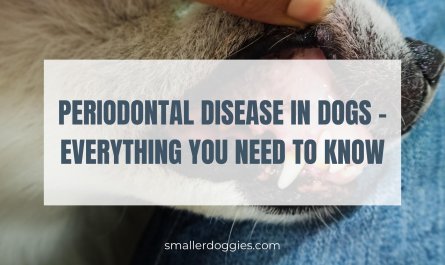Post Disclaimer
This post may contain affiliate links. If you use these links to buy something we earn a commission at no extra cost to you. Smaller Doggies is supported by its audience, Thank you!
If you have read our previous article about periodontal disease in dogs, then you will know just how important it is to take care of your dog’s teeth and gums if you haven’t check it out here: Periodontal Disease In Dogs – Everything you need to know
With a small amount of effort per day, you will be preventing your dog from developing a painful, incurable disease. It may take some time for your dog to become used to the idea of regular brushing, but with some time and a little persistence, your dog should come to love brushing time!
Here is a quick guide to help you get started with brushing your dog’s teeth.

How often should you brush your dog’s teeth?
Well, that all depends on your dog!
Some people will tell you every day; some say at least 2-3 times a week. If you have started brushing your dog’s teeth from a pup, you will be able to achieve an everyday routine for your dog that they will come to love. Yes, some dogs do enjoy teeth brushing!
If you have an older dog and they are not accustomed to teeth brushing, then it may take longer for them to get used to it, and therefore trying every other day, in the beginning, maybe the right way to go about it.
When is the best time to brush your dog’s teeth?
The best time to start brushing your dog’s teeth is when they are at their calmest, this should not be a stressful process for your dog. You can firstly start by touching your dog’s mouth and see how they react to you. Try to lift their gums to get them used to you around their mouth. Let them smell the toothpaste and lick some toothpaste and get familiar with the brush. Ensure to praise them and talk to them throughout the process so they feel comfortable and happy! It doesn’t hurt to try different times throughout the day to see what works for you and your dog the best, and we get it, people have schedules and careers, but you do the best you can and what fits into your time. The process, in time, will become a much quicker and more manageable task.
What is the best position for my dog to be in to brush?
Make sure your dog is in a comfortable position, approach them in a friendly manner, making sure you take note of their levels of anxiety. If they seem too anxious or uncomfortable, then stop and try again later. Kneel in front of your dog, or try sitting to the side of the dog and see what works best for them.
What tools do I need to brush my dog’s teeth?
- Dog-friendly toothbrush or
- Fingerstyle rubber toothbrush
- Dog-friendly toothpaste
- Treats for your dog (especially at the start to help them ease up to the idea of brushing)
Your dog may not like the longer toothbrush, and therefore you can try the rubber toothbrush that slips over your finger; this may be more comfortable for smaller dog’s mouths.
Frequently Asked Questions
When is a good time to start brushing puppy teeth?
The best time to start brushing is when your pup gets all its adult teeth—around six months of age.
Help! My dog hates it when I try to brush his teeth. What can I do?
You could try giving the dog some treats and trying again. If that fails, then there are chews you can get for your dog’s teeth. It is not as good as actually brushing, but if you have tried all other options, this will be better than not brushing at all.
Is it too late to start brushing my dog’s teeth?
Providing your dog has healthy teeth, it’s never too late. You can start brushing them. Taking them to a vet to get an oral health checkup would be a good idea if you are not sure.
Can you brush your dog’s teeth with human toothpaste?
No, you cannot use human toothpaste as the ingredients in the toothpaste are harmful to dogs. There are many kinds of toothpaste specially formulated for dogs, and they come in a few flavors that your dog will be sure to like one.
We hope this quick guide has given you the information you need to start brushing your dog’s teeth; remember, it’s never too late to start. It may take a bit of effort to get your dog comfortable with brushing. However, good oral hygiene and regular checkups with your vet are essential for your dog to maintain a healthy lifestyle.
Good luck! Please comment below if you have a good tip that you use for brushing your dog’s teeth!

Please note: The information in this article is provided primarily for educational reasons and should not be used to replace medical advice or treatment from your veterinarian.

